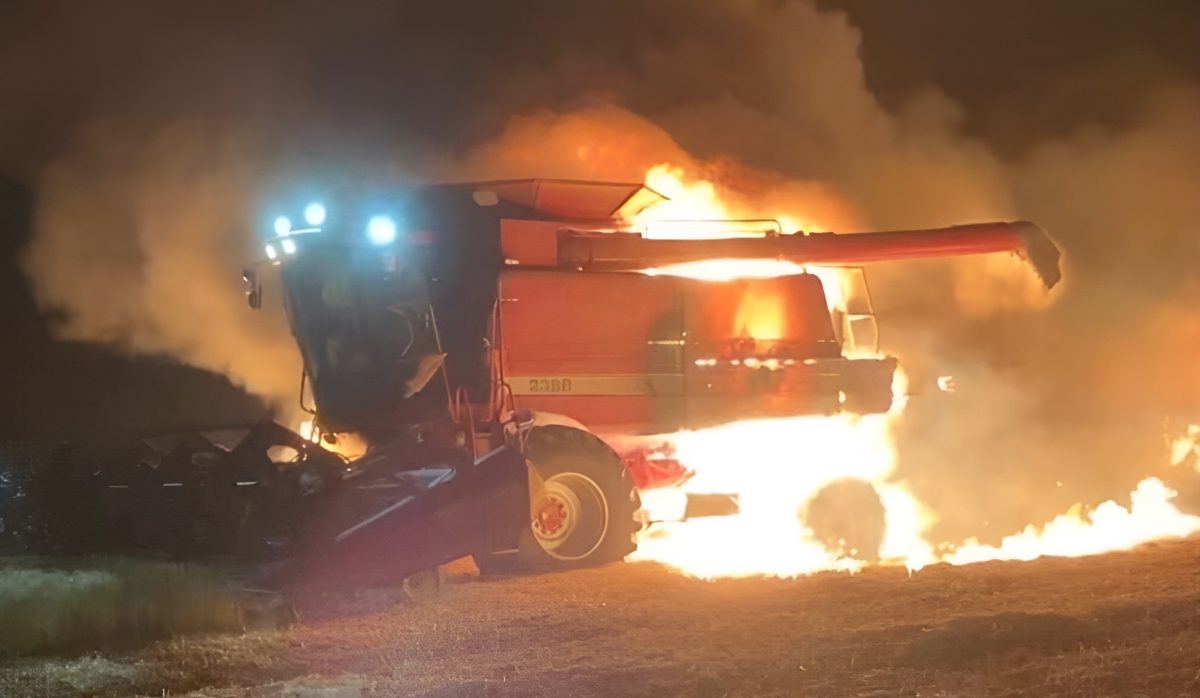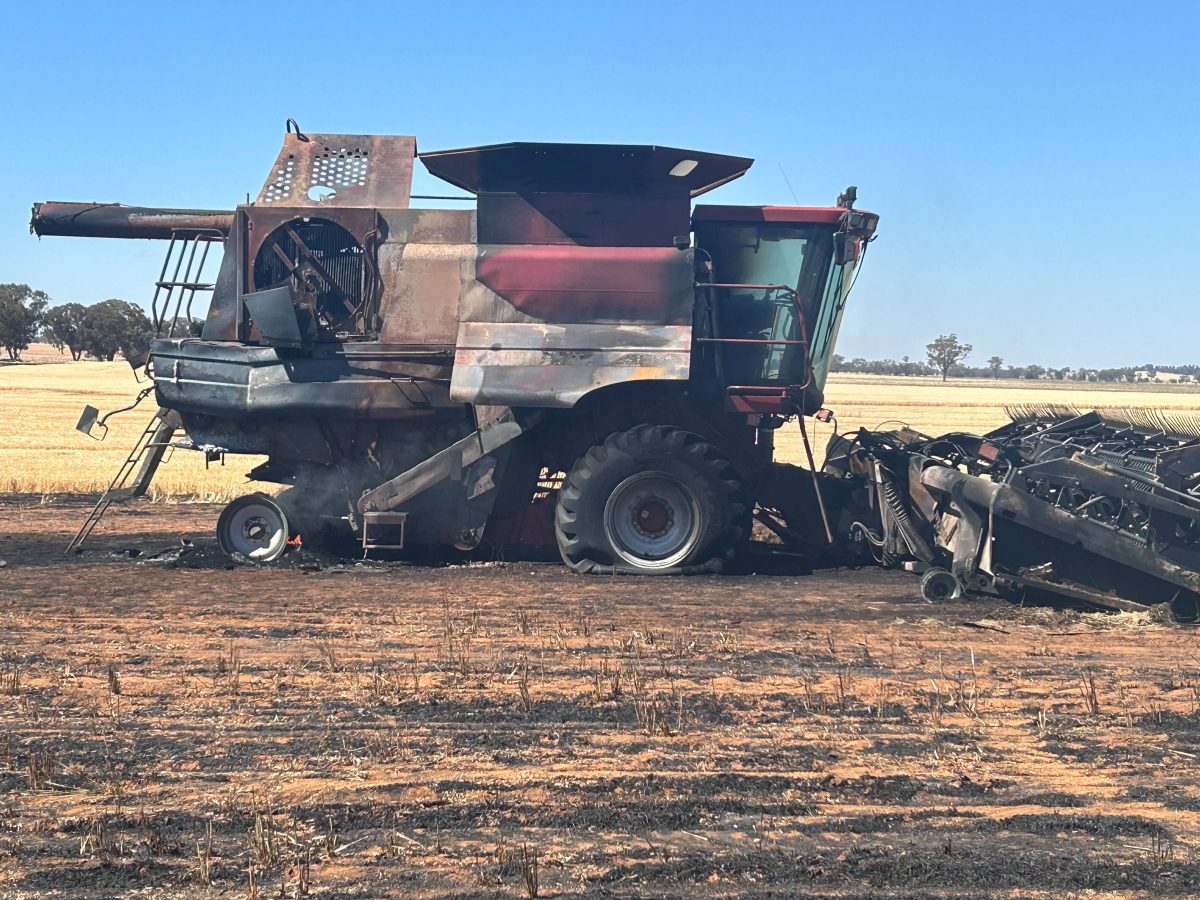
This header working east of Wagga took only moments to catch alight. Photos: Steve Morton.
Wagga farmer Steve Morton had never seen a header go up in flames, and now that he has, fire safety is a tad higher on the checklist for future harvests.
“It all happens pretty quick,” he said, reflecting on the loss of his Case combine harvester.
Steve said it had been business as usual at the pointy end of the season when things suddenly heated up.
“We were just harvesting away and the truck driver goes, ‘Ah, I think the header’s on fire!’,” he recalled.
“By the time the bloke in the other header turned around, he said there were flames coming out of it six-foot high, so it didn’t take long to get roaring.”
Fortunately, the fire didn’t spread far beyond the harvester, and by the time Steve was on hand, there was little to do but watch it burn.
“Luckily we were in the northeast corner of the paddock and the wind was blowing that way and so it sort of blew onto a dirt line and that was it,” he said.
It’s estimated that almost one in 10 combine harvesters operating in Australian paddocks is likely to catch fire, leading to machinery destruction, crop damage and potential injury.
Not to mention the loss in productivity with a workhorse machine out of action at a critical time.
“You lose income from the header and you lose time and then just all the heartache that comes with an insurance claim,” Steve reflected.
“But no-one was injured, so, you know, you can’t complain.”
It comes as a timely reminder to manage the risks, particularly with the forecast of hot years ahead.
“We spoke to our mechanics and they said that they have about three or four headers that had gone up in the days before ours just in this area,” Steve said.
“We were actually lucky that the chaser bin we had hired had a firefighting unit on it.
“We’ve never had one equipped like that before and we’d only just filled it up a few days ago.”

The aftermath of this week’s fire near Borambola.
Research company the Kondinin Group identified machinery hygiene, in particular dust and chaff build-up, and bearing failures as the main causes of harvest fires.
The slow-moving headers amass a build-up of dust and chaff that collects on the machine or sticks to the oil around hydraulic motors, which can be ignited by fire-hot exhausts.
Static-electricity, sparks from a rock or mechanical issues can also contribute to fire risk.
Steve said the experience had shown how important it was to have firefighting equipment close at hand.
“A lot of the time you might just have a trailer in the corner of the paddock, but when you think about it, it takes that long to get over there and hook up to it and by then the fire’s well and truly roaring,” he said.
“I don’t think I’ll ever own a chaser bin without a firefighting unit on it now.”







